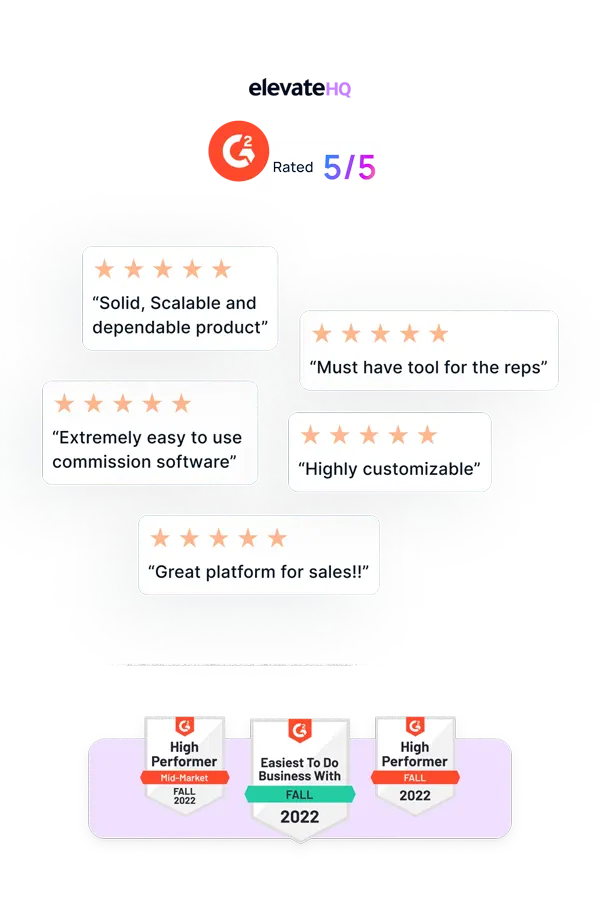When was the last time you bought a smartphone at a local store instead of an online retailer like Amazon or eBay?
Probably a long time ago, right? And for some of you younger readers — probably never, even.
But there was a time — not that long ago — when buying a mobile phone meant physically going to the store and having the sales rep there pitch you a bunch of options before ultimately selling you one.
Needless to say, times have changed greatly since then. Technology today has made buying products online ridiculously easy. From expensive items like laptops and smart televisions to something as basic as chart paper, people are more than happy to buy online now — and ideally with little-to-no human intervention.
The Effect of Technology on Sales
While technology has unquestionably replaced a great many number of sales jobs, it has also spawned a slew of new ones. From Solutions Consultants and Sales Engineers to Business Development Reps and Account Executives, the rapid growth of technology has forced the modern salesperson to adapt and evolve into a wide array of roles.
With each role, the involvement of the sales rep has also changed. As a result, the job of a modern salesperson has become a lot more nuanced. Sales today is more about helping the customer. This help could be either at the start of the buyer's journey, when the customer is considering their options, or at the very end, after the customer has purchased your product but needs help setting it up or using it.
Depending on your sales process, different members of your sales team will have different levels of customer interaction — and that, too, at different stages in the customer's buying journey.
In other words, the point of persuasion for each role in your sales organization will differ.
And it is this key factor that should play a major role in your sales compensation strategy.
But first …
What is the Point of Persuasion?
Simply put, the point of persuasion is that stage in a buyer's journey where a member of the sales team adds the most value to the deal. It is the point where a rep convinces the customer (in the capacity defined by that particular sales role) that the product offered by that company is the best fit for the customer.
It is the point where a salesperson earns their seat at the seller's table.
How to Locate the Point of Persuasion?
Locating the point of persuasion is easy if you know how your sales process works. That's because, as mentioned earlier, every sales process requires different members of the sales team to have varied levels of interaction with the customer throughout their buying journey.
Once you are able to pinpoint exactly when in your buyer's journey does a particular sales team member add the greatest value … voila! You have arrived at the point of persuasion for that role.
Harking back to one of our previous posts, we've listed down a customer's typical buying journey below. This time, however, let's analyze each step from the point of … well, the point of ‘point of persuasion' (PoP).
1. Awareness
Where the prospect realizes they have a need for something and sets out to evaluate options available in the market
PoP Analysis: Awareness about needing a product can either come from the customer themselves, or through a customer outreach plan. Inbound roles like Live Agents, and outbound roles like Sales Development Representatives (SDRs) and Business Development Representatives (BDRs) are ideal point of persuasion examples for this stage, since they are the ones who set up that crucial initial contact with the customer — be it via calls, emails, or social media.

2. Discovery
Where the prospect researches various options and shortlists the ones best suited to their needs
PoP Analysis: From here, the sales rep/Account Executive takes over. The point of persuasion for this stage lies in drawing an interested customer further in by making them aware of the product's key features and how each feature can benefit them. This is not the time for hard sells but to build a rapport with the customer. An Account Executive (aka sales rep) most commonly handles this stage of the buyer's journey.

3. Evaluation
Where the prospect evaluates the pros and cons of each option
PoP Analysis: The sales rep continues to be the customer's aide during this stage. This stage is especially crucial from a point of persuasion perspective, since the customer will likely be looking at other options as well. This makes it vital that the sales rep plays their part well and ensures that the customer doesn't end up going with a competitor's product.

4. Intent
Where the customer finalizes their decision and shows further interest in your product
PoP Analysis: Things have gotten quite serious by this point. Here, the point of persuasion lies in convincing the customer that the product will satisfy all their needs. To make this happen, the sales rep will often rope in other team members, like Solutions Consultants and Sales Engineers, who provide the customer with a demo account so they can get a real feel for the product. An interesting side note here is that the point of persuasion for Solutions Consultants and Sales Engineers does not lie in convincing the customer to buy the product. That rests with the sales rep alone, who has been with the customer since stage 2. The point of persuasion for the Solutions Consultants and Sales Engineers lies in ensuring the customer is completely satisfied with the product and knows how to use it, including all features and offerings.

5. Purchase
Where the customer purchases your product
PoP Analysis: Time to sign the dotted line. This is where old-school selling kicks in. Negotiations, banter, maybe some harmless schmoozing. The sales rep typically handles this stage as well. The point of persuasion is pretty simple here: convince the customer to buy the product. In case it's a big deal with a large value, the sales rep might ask their manager or VP to chime in and give the customer that added assurance that they'll be well taken care of.

6. Loyalty
Where the customer maintains a long-term relationship with your brand and becomes a repeat customer
PoP Analysis: The sales rep's job is done. From here, the Customer Success team takes over. First comes the onboarding stage. This is handled by the Solutions Consultants and Sales Engineers, whose point of persuasion lies in ensuring that onboarding is smooth and seamless, and that the customer is not given any reason to doubt the purchase. Then, a few weeks/months later, CX (Customer Experience) and Support from the Customer Success team follow up with the customer. Their point of persuasion lies in firstly ensuring the customer is happy with the product, and then to try and upsell or cross-sell other products from the company portfolio.

The Point of Persuasion & Sales Compensation Plans
Let's say a product is sold for 'X' dollars. The basic question that defines every sales comp plan is: What percent of X does each member of the sales team take? For this, you need to analyze each sales team member's role in that sale. Is he or she adding value to the sale? Or is the sale happening without their intervention? Identifying, defining, and measuring the point of persuasion for each sales role should be your primary focus when it comes to designing your sales comp plan. Legacy solutions where you build upon or borrow from previous years' strategies will lead to a sales comp plan that is lazy, outdated, and ineffective. So from here on, prevent your sales comp plans from becoming obsolete by designing them not from the point of convenience … but the point of persuasion.




